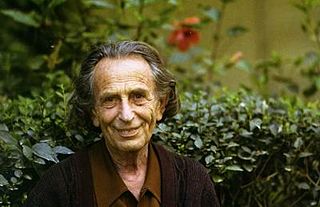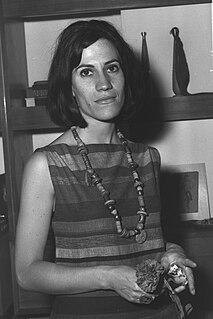
Bezalel Academy of Arts and Design is a public college of design and art located in Jerusalem, Israel. Established in 1906 by Jewish painter and sculptor Boris Schatz, Bezalel is Israel's oldest institution of higher education and is considered the most prestigious art school in the country. It is named for the Biblical figure Bezalel, son of Uri, who was appointed by Moses to oversee the design and construction of the Tabernacle. The art created by Bezalel's students and professors in the early 1900s is considered the springboard for Israeli visual arts in the 20th century.

Shimshon Holzman was an Israeli landscape and figurative painter. He is known worldwide for his water color paintings.

Avraham Ofek was a multidisciplinary Israeli artist.
Avi Schwartz is an Israeli painter.

Chaim Gliksberg was an Israeli painter who lived and worked in Tel Aviv.
Eliahu Gat was an Israeli landscape painter.

Joseph (Yossef) Zaritsky was one of the early promoters of modern art in the Land of Israel both during the period of the Yishuv and after the establishment of the State. Regarded as one of the most influential Israeli painters, Zaritsky is known for cofounding the "Ofakim Hadashim" group. In his works, he created a uniquely Israeli style of abstract art. For this work he was awarded the Israel Prize for painting in 1959.

Joseph D. Hackmey is an Israeli businessman, insurance company executive, actuary, investor, and an art and stamp collector. Art News listed Hackmey as one of the 200 biggest art collectors in the world. He was the Chairman of Israel Phoenix. Chairman of the Israeli Insurance Association and Chairman of the Israeli Life Offices Association.

Avigdor Stematsky (1908–1989) was a Russian Empire-born Israeli painter. He is considered one of the pioneers of Israeli abstract art.

Yehezkel Streichman was an Israeli painter. He is considered a pioneer of Israeli modernist painting. Among the awards that he won were the Dizengoff Prize and the Israel Prize.

Siona Shimshi was an Israeli painter, sculptor, ceramist, and textile designer.

Arie Aroch was an Israeli painter and diplomat born in Kharkiv, which was part of the Russian Empire. Aroch's work was a mixture of Pop Art and abstract art, along with elements from his biography. In addition, many scholars of the history of Israeli art have pointed out Aroch's pioneering use of Jewish themes in his works. His painting style included unstructured scribbling and drawing, and it influenced a broad range of artists, including Raffi Lavie, Aviva Uri, etc. Sarah Breitberg Semel, in her article, Agrippa versus Nimrod (1988), suggested Aroch as a model for the new Israeli concept of design in art, and suggested his painting, Agrippas Street was the representative of Jewish identity. In 1971, Aroch was awarded the Israel Prize in Painting for his work.

Visual arts in Israel refers to plastic art created first in the region of Palestine, from the later part of the 19th century until 1948 and subsequently in Israel and the occupied Palestinian territories by Israeli artists. Visual art in Israel encompasses a wide spectrum of techniques, styles and themes reflecting a dialogue with Jewish art throughout the ages and attempts to formulate a national identity.
Mirit Cohen was a Russian-born Israeli sculptor and painter. Cohen resided in New York City from 1975. In 1990, she committed suicide.
The “Tower of David Period” is the nickname which describes Israeli art during the 1920s. The nickname was coined as a result of the exhibition that took place in the Tower of David during that period. Instead of one artistic direction, this period was characterized by artistic works of conflicting styles, reflecting the worldview of the artists with regard to the social, political, and artistic reality within the Land of Israel and outside of it. Alongside the art created at “Bezalel”, which was characterized by decorative motifs and the influence of ars nova, the young Land-of-Israel artists produced works of art that reflected a variety of modernist influences.

Israel Zafrir was an Israeli photographer. Zafrir was one of the founding fathers of modern documentary photography in Israel.
Ofakim Hadashim is an art movement started in Tel Aviv in 1942.
Smadar Sheffi is an Israeli curator, art critic and researcher of contemporary art and culture. Since 2019 she is the Chief Curator at the CACR – Contemporary Art Center Ramla, which she founded. Her bilingual blog, The Window, was established in 2012.

Shmuel Raayoni was an Israeli painter, member of New Horizons, teacher and educator and founding member of Ein-Hod Artist Village.

Pinchas Abramovich was an Israeli painter during the period of the Yishuv and the following days of the state of Israel. He was one of the founders of the Ofakim Hadashim art group.













